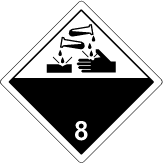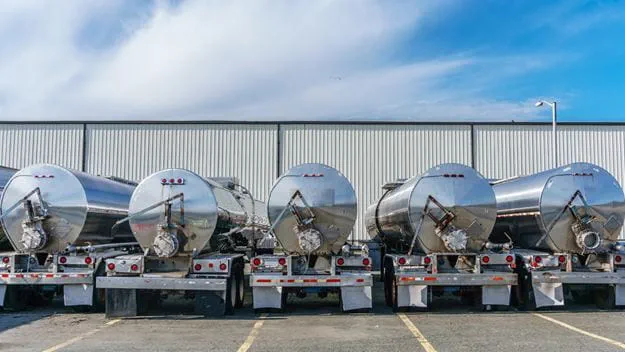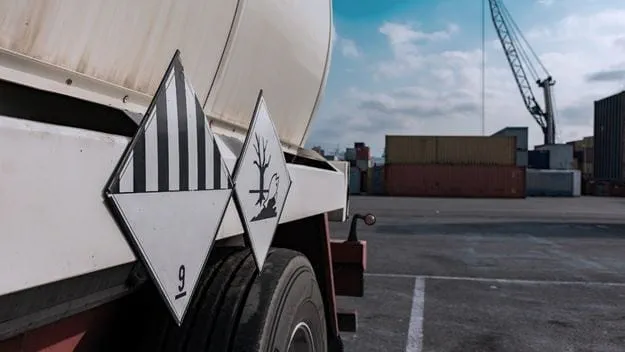
Hazard class 8: Corrosive substances
The dangerous goods regulations define corrosive substances as a substance that by a chemical action, causes irreversible damage to the skin, or in the case of a leakage, will materially damage or even destroy other goods or the means of transport. Corrosive substances can be both a solid and liquid form.
Packing groups
Although Class 8 dangerous goods do not have any other divisions, corrosive substances have been assigned a packing group which indicates the degree of danger.
Packing Group I: Substances presenting high danger
Packing Group II: Substances presenting medium danger
Packing Group III: Substances presenting low danger
| Packing group | Exposure time | Observation period | Effect |
| I | ≤ 3 min | ≤ 60 min | Full thickness destruction of intact skin |
| II | > 3 min ≤ 1h | ≤ 14 d | Full thickness destruction of intact skin |
| III | > 1 h ≤ 4h | ≤ 14 d | Full thickness destruction of intact skin |
| III | - | - | Corrosion rate on either steel or aluminium surfaces exceeding 6.25 mm a year at a test temperature of 55 ºC when tested on both materials |
Examples of commonly transported explosives
Class 8 dangerous goods examples are acid batteries fluid, alkali batteries fluid, formaldehyde, hydrochloric acid, iodine, methacrylic acid, nitric acid, sulphuric acid.
You may also be interested in
Any questions?
Our experts are ready to help. Get in touch and we'll find the solution you need.




